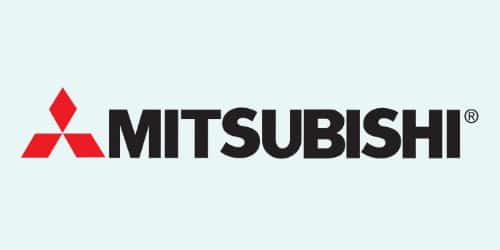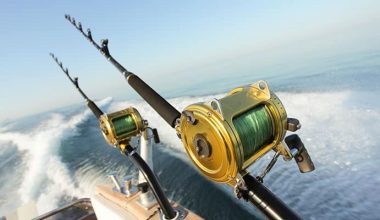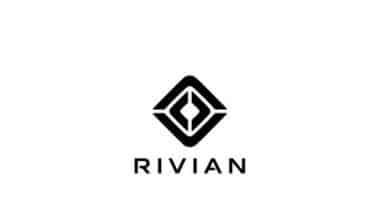Before it was Mitsubishi Motors and even moved off the island of Japan, the company built ships. Mitsubishi didn’t start making land-based products until the 1920s, after they started an electric company that made the Mitsubishi Model A, their first car, in 1917. It’s been a century since that first car, and Mitsubishi, like other automakers, has survived many storms. However, the Mitsubishi logo has remained consistent as a symbol of power and sustainability.
Read Also: MGM LOGO: What Does The MGM Logo Say? All You Need
Let’s go through the changes the logo has experienced over the years and the symbolic meaning it carries.
The Meaning of Mitsubishi
Mitsubishi is a Japanese word that means “three jewels.” The word is a combination of two Japanese words, “Mitsu” and “hishi.” Mitsu is Japanese for three, while hishi is Japanese for water chestnut. For millennia, the Japanese used the term to describe the form of a diamond.
So why not call it Mitsuhishi? The name is derived from the word’s pronunciation. When used in the middle of a word, the Japanese change the “h” sound to a “b.” As a result, they pronounce the two syllables as Mitsubishi and called the company accordingly.
Evolution of the Mitsubishi Logo
The firm’s origins may be traced back to the second half of the nineteenth century when Iwasaki Yataro took over the shipping company Tsukumo Trading. She changed her name to Mitsubishi in 1873. A deal was made with the Japanese government about sending soldiers and military supplies. This led to success. In return, the business helped the country’s new government put down the Satsuma Rebellion in 1877 by sending troops and weapons. Yataro later ventured into other businesses, including ship maintenance, finance, and mining.
The entrepreneur rented the Nagasaki Shipyard in 1884 to begin producing ships. He renamed the facility Nagasaki Shipyard & Machinery Works later on. Before it became Mitsubishi Shipbuilding Co., Ltd. at the start of the 20th century, it went through many other changes. In 1917, the company made the Mitsubishi Model A, which was the first car made in Japan for sale to the public. However, the car was eventually canceled since it was far more expensive than its American rivals.
Mitsubishi Shipbuilding merged with the Mitsubishi Aircraft Co. organization in 1934, which was producing aircraft engines and other ship and aircraft components. The new building was called MHI, which stood for “Mitsubishi Heavy Industries.” It was Japan’s largest private company. She concentrated on the production of huge vehicles and equipment.
In 1937, the company created and built a prototype military sedan. It was the country’s first four-wheel-drive car. However, soon following the war, the company shifted to the production of passenger cars. In 1950, the allied states told industrial conglomerates to break up. As a result, MHI was split into three regional corporations.
1870 – 1875
Mitsubishi utilized a variety of logotypes throughout its early years. The first was the family emblem of Yataro Iwasaki, the company’s founder. For their start-ups, Japanese entrepreneurs frequently use their family names (Honda, Toyota, and so on). Iwasaki named the company after images from his family’s symbol.
Mitsubishi means “three rhombs,” and the earliest logo had three broad black rhombuses stacked on top of each other. Each form was smaller than the one below it, and they were all beautifully outlined in white where they touched.
The other emblem was also a family symbol, but it belonged to the samurai clan Tosa, which was the first to hire Iwasaki. This one included three black and white oak leaves arranged in the shape of a star. This form later served as the inspiration for the now-famous Mitsubishi logotype.
1875 – 1914
Before the current Tosa logo was chosen, the company tried out a few different ones. Since the leaves were changed to thin rhombs, these were also based on the founder’s personal symbol. They were similar to those we have today, but leaner and longer. They were connected together in the center.
Mitsubishi chose the hue of their brand based on these rhombs. They picked bright red, as did many other Japanese corporations (red being the dominant color on their flag).
The present Mitsubishi emblem is essentially a mix of three rhombs (or diamonds, as Mitsubishi insists) on top of Tosa oak leaves shaped like a star. The kingdom of Tosa no longer exists (it was disbanded by imperial decree in 1871), but its people continue to live through Mitsubishi, and the firm has no plans to change it.
1914 – 2017
The rhombs on their insignia became much more geometrically sound and pleasing in 1914. The shapes go well with each other. For example, the top and bottom sides of the two rhombs below are perfectly horizontal, and the rhombs themselves are symmetrical.
Furthermore, wherever you look at the logo, each of the lines is continued by one of the lines of the other rhomb – a clever design.
Of course, there have been numerous versions of this composition over the years. It usually refers to their hue and relationship to the content. There are two major color options: one that is all red (except for the writing) and one that is entirely black.
They also employed the same type of wording for a long time, whether with or without the insignia itself. The letters appear thin and tightly packed, all around the same size if feasible.
The generic logo simply said ‘Mitsubishi,’ but for the dedicated automotive company founded in 1970, it said ‘Mitsubishi Motors’ beneath the emblem.
2017 – Now (Motors)
In 2017, the company introduced a new type of font designed exclusively for its automotive division. The sign has shrunk slightly, but the text underneath it has expanded. Except for the increased width, there aren’t many alterations to the typeface. Previously, the letters were crammed together, but they are now much wider than the insignia itself.
What Are the Mitsubishi Company’s Origins?
For ancient people, the number three has always held a special ethereal significance. Almost everything that comes in threes is seen as a sign of strength, mobility, and, in some cases, transcendence. Yataro Iwasaki’s ancestors date back centuries. His forefathers felt so strongly about the power of three that alternate family crests featured a three-shaped pattern to some extent, particularly in his mother’s and father’s households. Both clans’ crests were in the shape of a three, with the three oak leaves representing his birthplace and the diamond shape coming from his father’s clan. The ancient Mitsubishi symbol we know today is made by putting together the three-tiered shape from his father’s crest and the oak leaves from his mother’s crest.
What Is the Significance of the Red Mitsubishi Logo?
You’ve most likely seen the color red in the Mitsubishi logo. Is it arbitrary, or does it have a deeper meaning? The color red is significant in Japanese iconography. Red has long been thought to frighten away evil spirits since their earliest creation myths. As a result, many artifacts and good luck charms are adorned in crimson. Later, the Samurai adopted crimson not only because it was thought to bring luck and wealth, but also because it looked like blood. Blood was seen as an important part of life, and those who could control it were strong, powerful, and often scary.
Iwasaki’s family has three other key characteristics as well: dependability, integrity, and success. As the Mitsubishi logo and company changed, he saw that each of the red diamonds stood for these important things. In reality, the current Mitsubishi Corporation has a separate division that oversees all logo usage to ensure that nothing contradicts the brand value message.
How Has the Mitsubishi Logo Changed Through the Years?
In its century and a half of existence, the Mitsubishi emblem has changed very little. Early versions of the logo were made to look like the three oak leaves on the Yamauchi Crest. The diamond shape of the Iwasaki Crest has grown over time to become what we know it to be today. That’s the symbolism. But what about the name Mitsubishi? What is the source of that?
The Yamauchi Crest’s three-leaf oak sign is known as Mitsu-Gashiwa, which translates as “three oak leaves.” Sangai-bishi, which translates as three-tiered water chestnut, is the Iwasaki Crest. Take both the prefix and the suffix and you get Mitsubishi.
The Symbol
In the 1870s, the famous Mitsubishi logo was made to honor the company’s history and past.
The logo, which is made up of three red diamonds and is instantly recognizable all over the world, shows what the company’s name means in a visual way.
The Mitsubishi insignia was based on two crests: the three rhombi of the founder’s family, the Iwasaki’s, and the shape of three oak leaves, which was the crest of the Tosa Clan, who were Yataro Iwasaki’s first employers.
Each diamond in the Mitsubishi logo stands for one of the company’s most important values: dependability, success, and honesty.
Color and Font
The primary Mitsubishi logo’s powerful uppercase writing is created in a modern and robust sans-serif typeface with stable letters and bold, clean lines. The fonts that are most similar to the one used for the Mitsubishi symbol are probably Neo Sans Standard Bold and ED Northridge Sans Extra Bold, albeit with some changes.
The color palette of the Mitsubishi visual identity has been based on a combination of red and black since the early 1870s, and little has changed since then. The scarlet-red insignia represents perfection and precision, while the black text stabilizes and grounds the badge, providing professionalism and confidence to the composition.
Mitsubishi Expands Its Portfolio
Under Yataro’s direction, the company sent ships to Russia and China and almost had a monopoly on the seas. The government backed a competitive company to break up the monopoly that was nearly bankrupting both enterprises. Yataro died in 1885, and his brother Yanosuke took his place. To put a stop to the severe competition, the government ordered that the firms unite into what is now known as the Nippon Yusen line.
While the enterprise fought for survival on the high seas, it diversified on land. Yataro owned coal and copper mines and developed the Nagasaki Ship Building Yard before his death. This is where Japan built its first steel steamship.
Yataro’s son Hisaya took over as president in 1893, and he began revamping the corporation to support expanding investments in paper, glass, and even beer. However, it wasn’t until Yanosuke’s son Koyata took over as president from Hisaya in 1916 that he founded Mitsubishi Heavy Industries. And it was here that the company first started producing automobiles. Mitsubishi introduced the Model-A, Japan’s first mass-produced vehicle, in 1917.
Mitsubishi Motors’ History
Over the next 100 years, Mitsubishi Motors came up with a number of new technologies, including the first mass-produced electric car in 1970. In 1976, the company created patents for quiet shaft technology and licensed them to Porsche, Saab, and Fiat.
Mitsubishi Motors began selling cars in the United States under the auspicious “three-diamond” logo in 1982. The earliest models were the Tredia, Cordia, and Starion. The Mitsubishi Galant VR-4 won Japanese Car of the Year and Motor Trend’s Import Car of the Year in 1986, thanks to the world’s first electronically controlled suspension system.
In 1990, Mitsubishi Motors introduced the world’s first electronically controlled traction control system. As a result, governments all around the world, including the United States, have made this revolutionary technology a mandated safety feature. The Mitsubishi 300GT and Eclipse both ruled the US market at the same time, earning praise and a loyal fan base.
Mitsubishi Motors created the INVEC system in 1992, which is a shift control that adjusts to the driver’s habits. For this, Mitsubishi Motors won “Technology of the Year,” which shows that it is a leader in its field. In the same year, the MIVEC engine came out. It keeps the engine’s performance while making it use less fuel.
Read Also: MERCEDES BENZ: The Untold Story of the World’s No. 1 Car Brand
Mitsubishi introduced the first gasoline direct injection technology in 1996, with a view toward lower emissions. The Lancer Evolution with all-wheel drive was named Automobile of the Year by Automobile magazine in 2003. It would also win Japan’s Automobile of the Year award in 2007 for having the most advanced Super All-Wheel Control system.
In 2008, the company was proud to announce its “DRIVE@EARTH” pledge, in which it promised to build environmentally friendly cars using EVs, PHEVs, and other technologies that reduce emissions to protect and help the global environment.
The i-MiEV was Mitsubishi Motors’ first electric car, and it was followed by the plug-in hybrid PX-MiEV SUV. Over the next ten years, Mitsubishi Motors would make the Outlander PHEV and bring back the famous Eclipse, which would earn them awards and loyal customers. After that, Mitsubishi plans to release the all-electric eX SUV, which will have the best range in its class, the ability to drive itself, and a modern look.
Mitsubishi Automobiles Today
Mitsubishi Motors is now the world’s largest maker of electric cars. In 2012, it won the “Model of the Year” award. The company has $2.110 trillion in revenue and over 30,700 employees worldwide; not to mention that Mitsubishi sells its vehicles in nearly 160 countries worldwide.
Interesting Information
Mitsubishi Motors has more than 11 business partners in 10 countries and regions with car manufacturing facilities. It has 8 transmission, engine, and parts facilities in 5 countries and 7 research and development facilities in 4 countries. Furthermore, the company has more than 51 consolidated subsidiaries operating under its brand name.
Current Mitsubishi Vehicle Models
Trucks
- 2015 Mitsubishi L200
Sedans
- 2015 Mitsubishi Mirage
- 2015 Mitsubishi I-MiEV
- 2014 Mitsubishi Lancer Sportback
- 2012 Mitsubishi Galant
Coupes
- 2015 Mitsubishi Lancer
- 2014 Mitsubishi Lancer
- 2015 Mitsubishi Lancer Evolution X
- 2012 Mitsubishi Eclipse Coupe
- 2012 Mitsubishi Eclipse Spyder
SUVs
- 2015 Mitsubishi Outlander PHEV
- 2015 Mitsubishi Outlander Sport
- 2015 Mitsubishi Shogun
- 2015 Mitsubishi ASX
- 2011 Mitsubishi Endeavor
Convertibles
- 2012 Mitsubishi Eclipse Convertible
- 2012 Mitsubishi Eclipse Spyder
Despite the fact that the Mitsubishi Motors brand has only been around for 45 years, the company has established an incredibly strong position in the global automobile market. Because of this, Mitsubishi is a great example for any company that wants to be successful.
What Does the Mitsubishi Logo Symbolize?
The three-diamond logo was chosen as the company’s emblem by Yataro Iwasaki, the creator of the previous Mitsubishi organization. The insignia is reminiscent of the three-leaf crest of Yataro’s first employer, the Tosa Clan, as well as the three stacked rhombuses of the Iwasaki family crest.
What Is Special About Mitsubishi Cars?
Mitsubishi Motors’ innovations deliver a sense of security, safety, and peace of mind while also satisfying drivers’ desires to widen their range of activity and take on new challenges. 1 In various markets, it is marketed as the ASX or Outlander Sport.
What Car Has a Diamond Logo?
A logo is an important part of a business identity. It becomes a metaphor for the organization as a whole. When someone mentions the “diamond brand,” you know they’re referring to Renault.
Why Mitsubishi Is the Best?
Mitsubishi is well-known for its durability and dependability all around the world. To top it all off, Mitsubishi’s incredible warranty puts drivers at ease. The powertrain limited warranty is 10-year/160,000 km, while the new vehicle limited warranty is 5-year/100,000 km.
Related Articles
- CADILLAC LOGO: The Cadillac History of Excellence.
- CBC Logo: Everything You Should Know About the Design
- BEST EMPLOYEE LEAVE MANAGEMENT SYSTEM: Top Picks In 2023
- KOREAN CAR BRANDS: Best 19+ North & South Korean Car Brands in USA
- eBay Selling Fees: Pricing, Calculators and Best UK Practices
- KOREAN CAR BRANDS: Best 19+ North & South Korean Car Brands in USA






